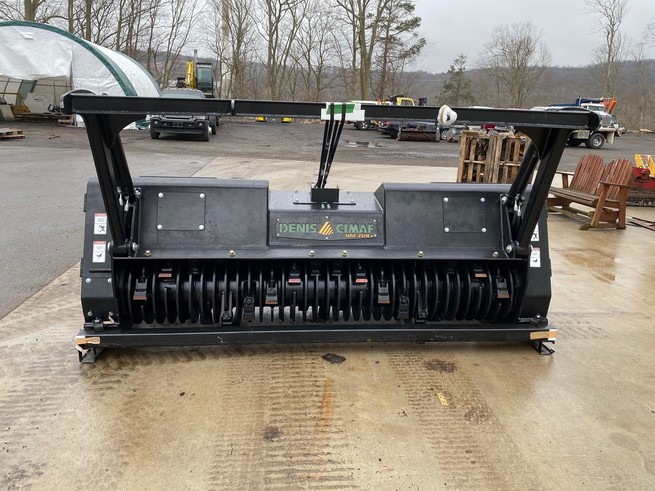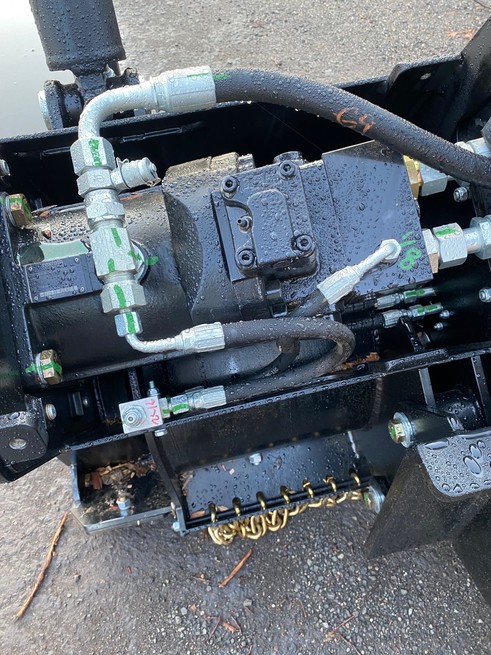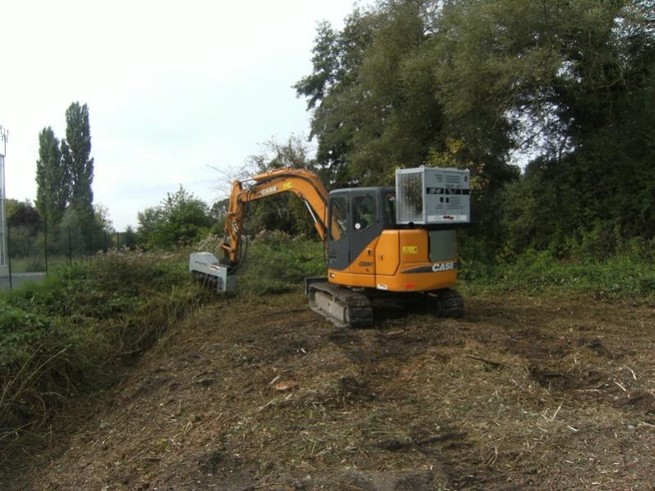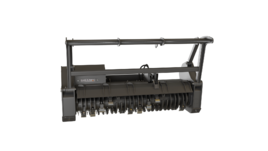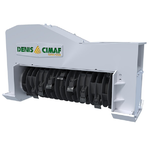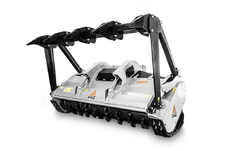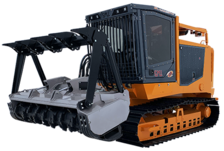Mulchers Overview
We handle several different manufacturers of forestry mulchers to give a broad offering of attachments to fit your specific needs. We have front mount and boom mount muchers in both carbide or sharp blade options so we are sure to have the right option for you. Contact us today to talk to one of our specialists that will help you make the best choice for your application.
Browse Mulchers
Frequently Asked Questions
A forestry mulcher, also known as a forestry mulching machine or a forestry mulcher attachment, is a specialized piece of equipment used in land clearing, vegetation management, and forestry operations. Its primary function is to clear and mulch trees, shrubs, brush, and other vegetation in forests and wooded areas. Here are the key features and functions of a forestry mulcher:
Mulching: The primary purpose of a forestry mulcher is to grind and mulch trees and vegetation into fine wood chips or mulch. This process helps reduce the cleared vegetation to a more manageable size, making it easier to handle or dispose of.
Land Clearing: Forestry mulchers are commonly used for land clearing activities, such as creating firebreaks, clearing right-of-ways for roads or pipelines, and preparing land for construction or agriculture.
Vegetation Management: In forestry and natural resource management, forestry mulchers are used to control undergrowth, invasive species, and vegetation that may pose a fire hazard or hinder the growth of desirable trees.
Efficiency: Forestry mulchers are designed for efficiency and productivity. They can quickly clear large areas of land, reducing the need for manual labor or multiple passes with other equipment.
Attachment: Forestry mulchers can be attachments for various types of heavy equipment, such as excavators, skid-steer loaders, or dedicated forestry tractors. This versatility allows them to be used in different applications and on different terrains.
Cutting Mechanism: Forestry mulchers typically have a rotating drum or cutting head equipped with sharp teeth or blades. This cutting mechanism grinds the vegetation as it moves through the machine.
Safety Features: Safety is a critical consideration when operating a forestry mulcher, as they are powerful machines that can pose risks to operators and bystanders. Safety features often include protective cages, debris curtains, and emergency shut-off systems.
Environmental Benefits: Forestry mulchers can be environmentally friendly alternatives to more destructive land-clearing methods like burning or bulldozing. They leave behind mulch that can help improve soil quality and reduce erosion.
Versatility: Forestry mulchers come in various sizes and configurations, making them suitable for different tasks and terrain types. Some are designed for lighter vegetation, while others can handle larger trees.
Maintenance: Like all heavy equipment, forestry mulchers require regular maintenance to ensure they operate efficiently and safely. This includes blade sharpening, lubrication, and inspections.
Forestry mulchers have become valuable tools in forestry and land management due to their efficiency, environmental benefits, and ability to clear vegetation in a controlled manner. They are commonly used in forestry operations, land development, wildfire prevention, and habitat restoration projects.
Mulching: The primary purpose of a forestry mulcher is to grind and mulch trees and vegetation into fine wood chips or mulch. This process helps reduce the cleared vegetation to a more manageable size, making it easier to handle or dispose of.
Land Clearing: Forestry mulchers are commonly used for land clearing activities, such as creating firebreaks, clearing right-of-ways for roads or pipelines, and preparing land for construction or agriculture.
Vegetation Management: In forestry and natural resource management, forestry mulchers are used to control undergrowth, invasive species, and vegetation that may pose a fire hazard or hinder the growth of desirable trees.
Efficiency: Forestry mulchers are designed for efficiency and productivity. They can quickly clear large areas of land, reducing the need for manual labor or multiple passes with other equipment.
Attachment: Forestry mulchers can be attachments for various types of heavy equipment, such as excavators, skid-steer loaders, or dedicated forestry tractors. This versatility allows them to be used in different applications and on different terrains.
Cutting Mechanism: Forestry mulchers typically have a rotating drum or cutting head equipped with sharp teeth or blades. This cutting mechanism grinds the vegetation as it moves through the machine.
Safety Features: Safety is a critical consideration when operating a forestry mulcher, as they are powerful machines that can pose risks to operators and bystanders. Safety features often include protective cages, debris curtains, and emergency shut-off systems.
Environmental Benefits: Forestry mulchers can be environmentally friendly alternatives to more destructive land-clearing methods like burning or bulldozing. They leave behind mulch that can help improve soil quality and reduce erosion.
Versatility: Forestry mulchers come in various sizes and configurations, making them suitable for different tasks and terrain types. Some are designed for lighter vegetation, while others can handle larger trees.
Maintenance: Like all heavy equipment, forestry mulchers require regular maintenance to ensure they operate efficiently and safely. This includes blade sharpening, lubrication, and inspections.
Forestry mulchers have become valuable tools in forestry and land management due to their efficiency, environmental benefits, and ability to clear vegetation in a controlled manner. They are commonly used in forestry operations, land development, wildfire prevention, and habitat restoration projects.
